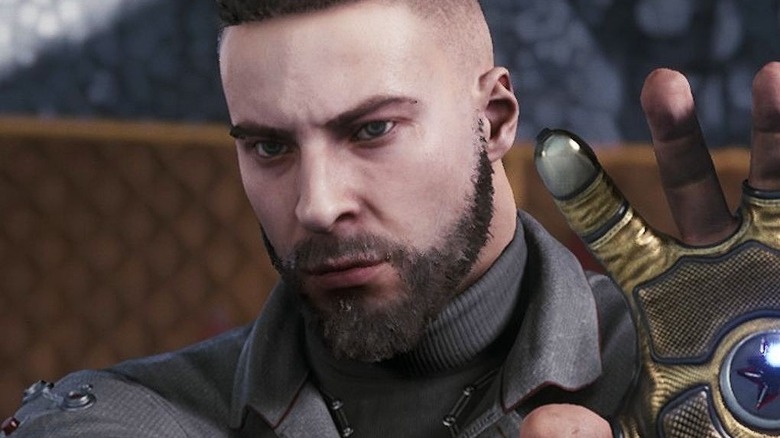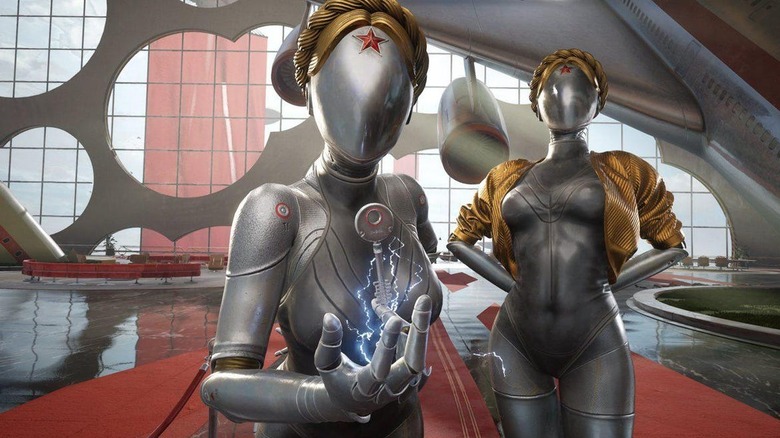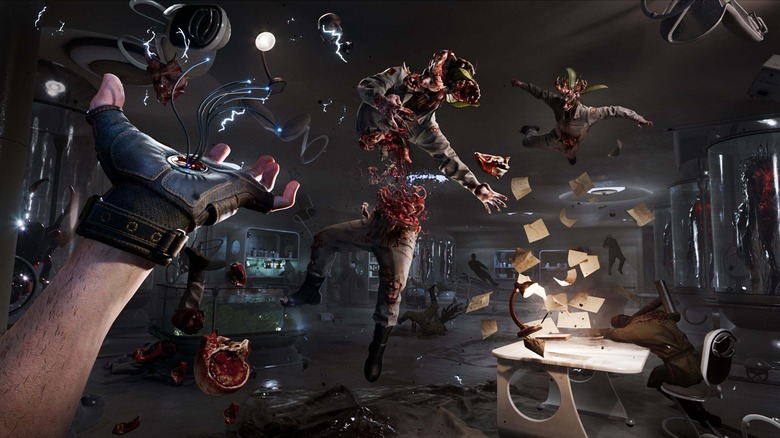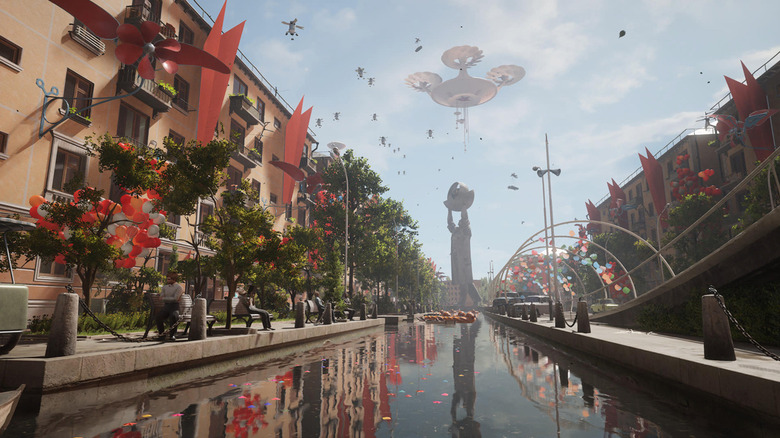Atomic Heart Review: A Visually Beautiful World That Struggles Elsewhere
- A beautiful world filled with character and amazing visual design
- A lot of player choice in combat and loadout
- Great atmosphere throughout
- Combat can feel repetitive
- A poorly written protagonist
- Puzzles are very simple and far too common
Xbox Series X (via Game Pass) was used for this review. "Atomic Heart" is available now on PS4, PS5, Xbox One, Xbox Series X|S, and PC.
Leading up to its release, "Atomic Heart" garnered a lot of attention from players thanks to its stylish trailers that built up a mystery surrounding the game's great visuals. The trailers featured explosive combat, incredible robotic designs, and sneak peeks at an alternative-history world where the Soviet Union rose out of World War II to become the most powerful nation in the world. Early looks at the game also seemed to hint at the game's developers taking inspiration from beloved franchises like "BioShock" and "Fallout," which only added to building hype for the game.
Now, "Atomic Heart" has released from the developer Mundfish and is published by Focus Entertainment, accompanied by a strange trailer that takes shots at "Hogwarts Legacy." Starting with a lengthy cinematic introduction that introduces you to the world before it falls to chaos, "Atomic Heart" starts off highly reminiscent of "BioShock." You are introduced to a communist paradise that runs on the back of robotic servants, scientific progress, and simply amazing visual design in every corner.
You are also introduced to the protagonist of "Atomic Heart," a special operative referred to as P3 who wields a prototype piece of AI equipment in his glove. This allows him to interface with a revolutionary material at the core of Russia's scientific advancements. Shortly after arriving, P3 finds himself in the middle of a violent uprising of the robot servants, resulting in him trying to save the entire Soviet Union.
A triumph of visual design
While you explore the tunnels, parks, and manufacturing plants of Facility 3826, the game's stellar visual elements are a clear standout of the experience. Taking place in an alternate 1955, the game's environments offer up an interesting extrapolation of where Soviet-era architecture, art, and philosophy could have gone if history had played out differently. There are colossal concrete statues of important figures, red accents as far as the eye can see, and a beautiful brutalist design style to every nook and cranny. The world's alternative technologies also help keep it all feeling a bit alien, even when seeing modified versions of items present in the modern world.
After the uprising of the robot servants that kept Facility 3826 running, the entire base quickly falls apart. This brings an entirely new element to the game's environmental design as destruction is everywhere, bodies are hanging from exposed rebar, and transportation systems are crippled. It all gives the environments an oppressively creepy atmosphere. It always feels as if a shocking discovery or cinematic moment is right around the corner, and it often is.
The atmosphere combined with the excellent designs throughout "Atomic Heart" help make experiencing the world one of the best aspects of the title. Even as the story fails to keep you engaged enough to want to continue, it is well worth playing only to see what strange concepts and areas await.
Gameplay that does just enough
As you explore the linear levels of "Atomic Heart," gameplay takes two forms. Most of time in the game is spent gathering resources while walking around and fighting any enemies that pop up in first-person melee and shooting combat. You'll face a small range of common enemies throughout your adventure, including different robotic units, plant-based humanoid zombies, and colossal bosses. To deal with them, you're able to customize your loadouts with more than a dozen weapons, upgrade them with various attachments and abilities, and wield glove-based abilities such as a freezing spray and electric shock.
The best part of combat in "Atomic Heart" is how open it is for player expression. Each weapons overs a unique approach to combat, powers can be chained together for greater effect, and even P3's abilities can be improved. It comes together to offer a sandbox to experiment with during combat, which helps offset how repetitive the game's encounters are. Many of the options you are given also feel woefully underpowered to the point of not being worthwhile when a gun is an option.
The second biggest part of gameplay in "Atomic Heart" is, surprisingly, puzzles. There are a ton of short puzzles for you to solve when trying to open doors and passages to explore or continue through a level. These puzzles are never long enough to detract majorly from the game, but they do grind its pacing to a halt and get old very quickly.
Writing that will make you cringe
"Atomic Heart" takes around 16 hours to complete on average, and during that time, the consistently weakest part of the experience is its writing. The foundation of the game's narrative is simple enough. There are evil robots that need to be killed and you are in control of a character uniquely able to do the killing. That character happens to be P3, who also happens to be the most annoying protagonist in gaming in quite a while. He quips about everything that happens throughout levels, frequently while talking to the AI in his glove as well.
What makes him so annoying is that he is written in a way reminiscent of a preteen that is trying painfully hard to seem edgy and smarter than everyone around them. While the writing for the rest of the characters players meet throughout the game are generally fine, it is nearly impossible to not roll your eyes and cringe at every one of P3's lines throughout the game.
The writing in "Atomic Heart" also struggles to match the level of its gorgeous and interesting world. Elements of the world's history and how it functions are explained, but often through clunky exposition jumps that drag on long enough for you to get distracted or lose interest. The game's story also fails to surprise or go anywhere particularly interesting, which is unfortunate considering how it is told in such an engaging world.




